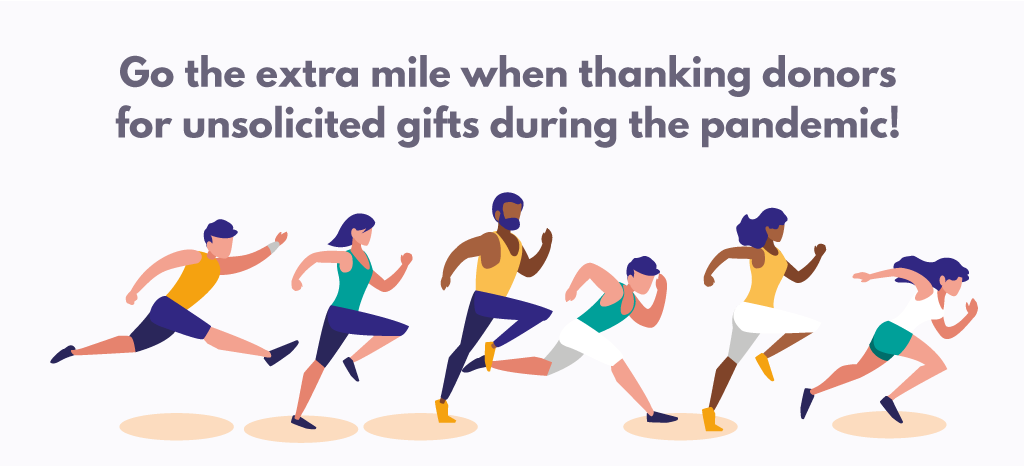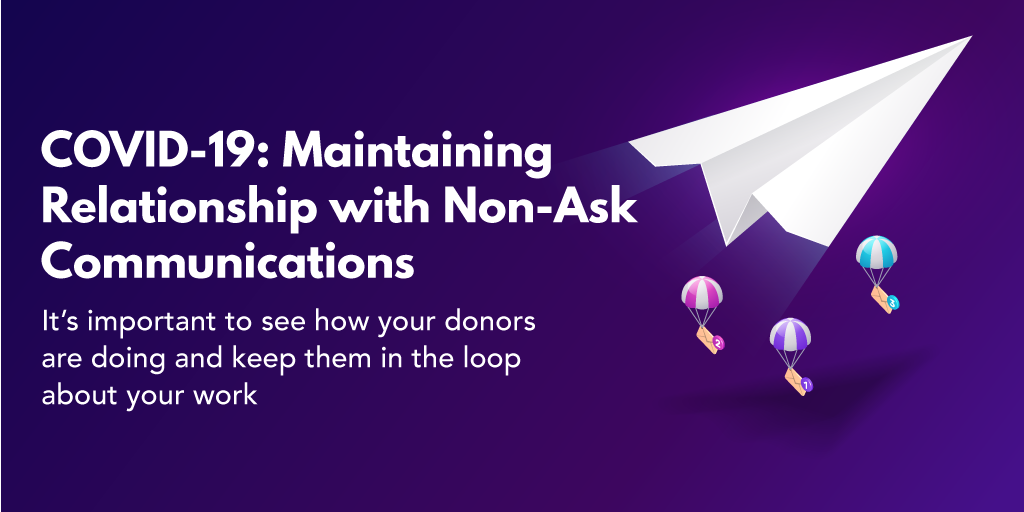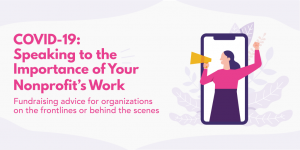It has been a crazy few weeks. But people are beginning to adjust to the new normal as we work to flatten the curve together. It’s a great time to maintain relationships with non-ask communications while everyone is spending time at home.
We’ve talked a lot about several aspects of crisis appeals and messaging for nonprofits directly involved in the outbreak. But what if your organization decided to hold off on appeals until the crisis is over?
It’s still important to maintain relationships with non-ask communications. You want to be able to hit the ground running when your fundraising activities resume. And your donors will be more open to giving when the time is right if you show them you care about them now.

Pick Up the Phone
Other than face-to-face meetings, a phone call is probably the most personal way to communicate with donors. And you obviously can’t meet with your donors in person for now.
So now is a great time to pick up the phone and have conversations with your loyal supporters. An unexpected call from a friendly voice could be a welcome surprise during this difficult time.
Ask your donors how they and their loved ones are holding up. Be personal and ask how they’ve been passing the time. Focus on the donor. Let them know that these difficult times makes you appreciate your supporters even more.
Then, talk a little bit about what your organization is up to during the pandemic. Remember, your loyal donors are invested in your mission. So, they will be interested to hear what you’ve been up to!
Then stop short of making an ask. Express your gratitude for past support and let them know you are looking forward to getting back to normal. Wish them the best and invite them to keep in touch!
Create a Special Impact Report
We could all use a bit of good news during a time like this. So, this could be a good opportunity to put together a special impact report. You can uplift donors when they need it most by reminding them of everything they’ve helped you accomplish over time.
Look back and talk about your major accomplishments over the past few years. Re-enforce how specific initiatives help you achieve your mission and update donors on the impact of your work.
Use images and testimonials that help illustrate what you’ve been able to accomplish because of your donors. And don’t forget to give your supporters an inside look into the lives of the people you serve. Show them how their support has made a difference over time.

Be Extra Thankful for Donations
Don’t be surprised if some donors act on their own and make a gift after you touch base. Your supporters might have expected your phone call to end with an ask, or to see a link to your online giving page in your email.
And those with the means to give right now may take it upon themselves to do so. You need to let them know how much you appreciate any unsolicited donations during this difficult time.
You should send donors a handwritten letter of appreciation at the minimum. It’s even better if you can pick up the phone again to say thank you. Let donors know that you weren’t expecting a donation, but their support is more valued than ever.
Tell them about the ways their donation will be put to immediate use. Let them know how their money will help your efforts, especially if your organization is fighting the pandemic on the frontlines.
Or let them know how they are helping you maintain your activities as normally as possible during this uncertain time.
What Donors Want to Hear Right Now
You need to do three key things when maintaining relationships with non-ask communications during the coronavirus outbreak no matter how you reach out.
First, check in with donors and see how they are doing. Be empathetic to their struggles and express your genuine concern for their wellbeing.
Second, thank them for their past support. Be grateful, no matter how long someone has been giving or how big or small their average gift is. If you want to secure continued support after the dust settles, you need to show your appreciation now.
Finally, let your donors know what your nonprofit is up to. Your non-ask communications should focus first and foremost on the donor. But your donors will also be wondering what you are up to during this difficult time.
They care about your organization and your work. They may be as worried about you as much as you are about them!







